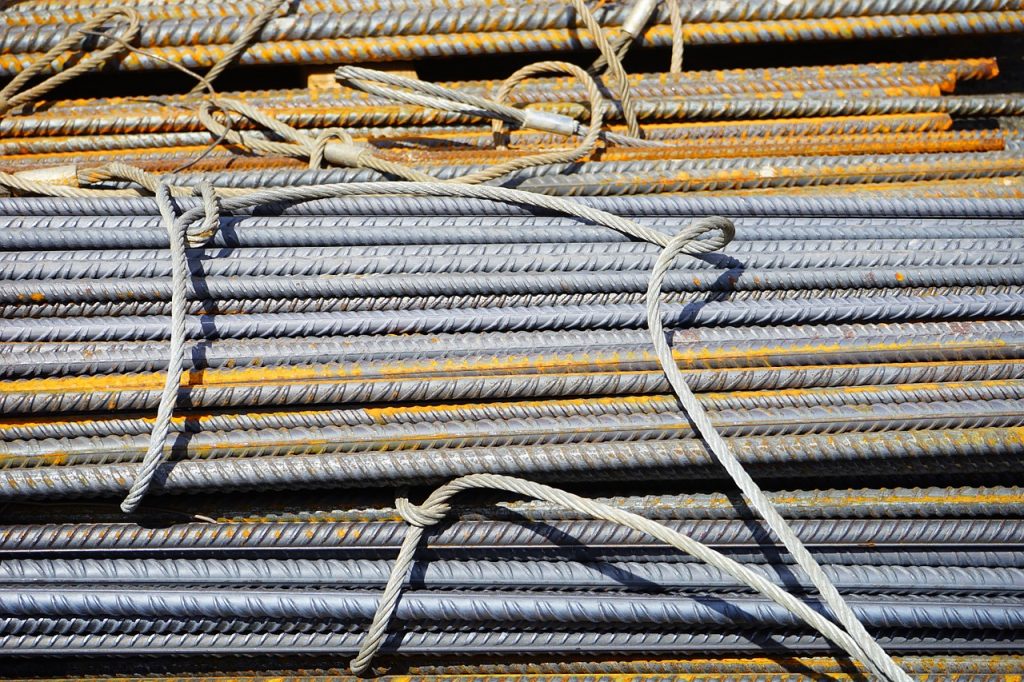TMT, or Thermo-Mechanically Treated bars, are a special kind of steel reinforcement bars used widely in modern construction. These bars undergo a unique process of rapid cooling from a molten state, usually by spraying water at specific intervals. This process gives TMT bars their signature quality — a hard and durable outer surface with a softer and more flexible inner core.
This unique structure provides the perfect balance between strength and flexibility, making TMT bars ideal for building high-rise structures, bridges, and other critical infrastructure — especially in humid or earthquake-prone areas.
Why TMT Bars Are Better Than Regular Steel Bars
When compared to traditional steel bars, TMT bars have several clear advantages:
- Higher strength and durability
- Better resistance to corrosion
- Superior flexibility and ductility
- Improved bonding with concrete
- Greater longevity in extreme environments
These qualities are precisely why TMT bars are the preferred choice for modern-day engineers, architects, and homeowners alike.
Different Grades of TMT Bars
TMT bars come in different grades, each designed for specific types of construction. The grading is based on the bar’s tensile strength, yield stress, and elongation properties. Let’s take a closer look at the four main grades:
Fe 415 – For Residential Construction
Fe 415 TMT bars are known for their excellent elongation. This means they can stretch under stress without breaking — a key requirement in earthquake-prone regions. That’s why they’re widely used in homes and small residential buildings. They also come with anti-corrosion coatings, making them suitable for damp conditions.
Fe 500 – For Mid-Sized RCC Projects
Fe 500 is a versatile and highly bendable TMT bar. It provides strong resistance to both corrosion and dynamic loads. It’s a popular choice for large residential and commercial projects such as bridges, multi-storeyed buildings, and underground structures. Many engineers prefer this grade due to its reliability.
Fe 550 – For Coastal & Underground Projects
While similar in many ways to Fe 500, Fe 550 TMT bars have even higher tensile and yield strength. This makes them perfect for larger construction projects and harsh environments like coastal areas or underground settings where moisture levels are high.
Fe 600 – For Industrial and Heavy Infrastructure
Fe 600 is the toughest of all TMT grades. It offers the highest tensile strength and is often used in industrial-scale RCC constructions such as dams, flyovers, and mega-bridges. Its exceptional strength and longevity make it a top-tier choice for critical infrastructure.
Factors Affecting TMT Grading
Grading of TMT bars depends on several factors:
1. Chemical Composition
The elements used in the steel — like carbon, sulfur, phosphorus, and manganese — play a huge role in defining a TMT bar’s properties. A lower carbon content increases ductility, while the right mix of alloys boosts resistance and strength.
2. Physical Properties
Physical properties such as tensile strength, elongation, and yield stress help determine the TMT grade. These mechanical traits are crucial in selecting the right bar for a specific structural requirement.
3. Heat Treatment
Heat treatment during manufacturing influences the bar’s outer and inner structure. The quick quenching process forms a strong outer shell, while the inner part cools slowly to retain flexibility.
4. Fabrication Process
The way the steel is rolled (hot or cold) affects its final performance. Hot-rolled TMT bars are more ductile, while cold-rolled ones tend to be more brittle.
Importance of TMT Testing and Material Verification
No matter how strong a TMT bar claims to be, it’s vital to verify its quality through professional testing. That’s where certified metal and alloy testing labs come into play. Choosing a trusted steel material testing lab ensures your construction project meets all safety and durability standards.
Why Testing is Crucial:
- Confirms grade and strength claims
- Detects impurities or weaknesses in the material
- Ensures compliance with IS standards
- Prevents structural failures and costly repairs
Whether you are building a home or a highway, always choose a TMT testing lab that’s experienced and accredited. A steel material testing lab near me can easily be found through online directories or construction forums. Make sure to go with the best metal and alloy testing house for reliable results.
Common Tests Conducted on TMT Bars
Reputed alloy steel material testing labs perform a wide range of tests, such as:
- Tensile Strength Test – Measures the maximum strength the bar can withstand.
- Bend & Rebend Test – Checks the bar’s flexibility and resistance to cracking.
- Yield Stress Test – Measures the stress level at which the bar starts to deform permanently.
- Chemical Composition Test – Identifies the percentage of carbon, manganese, sulfur, etc.
- Corrosion Resistance Test – Ensures the bar’s durability in humid or marine environments.
These tests ensure that the TMT bars used in your project meet the exact grade and safety standards.
Final Thoughts
TMT bars are the backbone of modern construction, offering unmatched strength, flexibility, and longevity. Their graded classification helps builders choose the right type for the job, depending on environmental conditions and structural needs.
However, even the best TMT bars must go through proper testing. By selecting a reputed steel material testing lab near me or a certified alloy steel material testing lab, you guarantee peace of mind and structural integrity for your project.
Before starting any major construction, always test your TMT bars at the best metal and alloy testing house to ensure top-grade quality. Remember, the foundation of a strong building lies in the strength of its materials — and proper testing is the first step toward long-term safety.


